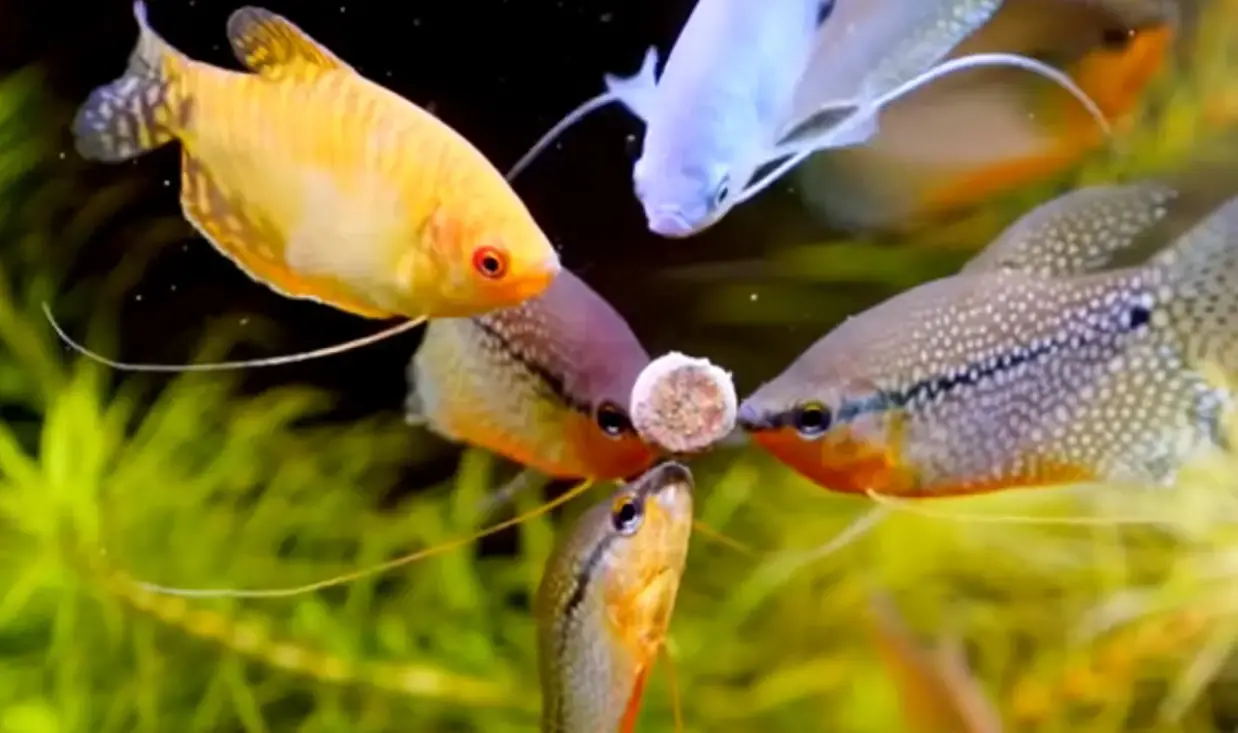
Feeding your fish might seem like the easiest part of keeping an aquarium, but it’s where many beginners slip up. Overfeeding, underfeeding, and using the wrong food can all lead to poor water quality and unhealthy fish. If you’re new to fishkeeping, this guide will teach you everything you need to know to feed your fish properly and confidently.
Why Proper Feeding Matters
Feeding is about more than just keeping your fish full. A balanced, appropriate feeding routine:
- Supports growth and vibrant coloration
- Boosts immunity and reduces disease risk
- Prevents water pollution caused by leftover food
- Encourages natural behavior and activity
Feeding your fish the right way means understanding their dietary needs, knowing how often to feed, and choosing the correct food.
Understanding Fish Diets: What Do Fish Eat?
Different species have different dietary requirements based on whether they're herbivores, omnivores, or carnivores.
Herbivores eat plant-based foods like algae, vegetables, and spirulina.
Omnivores eat a mix of plants and protein sources (the most common type of aquarium fish).
Carnivores require a protein-rich diet like worms, shrimp, or insect larvae.
Examples:
- Goldfish, Plecos – mostly herbivorous.
- Tetras, Guppies, Mollies – omnivores.
- Betta fish, Oscars – more carnivorous.
Types of Fish Food: What Should You Use?
There are many fish food options out there. Here’s a breakdown of the most common types:
1. Flakes
Ideal for surface feeders like tetras, guppies, and danios.
Easily digestible and widely available.
It can foul the water if overused or not eaten quickly.
2. Pellets
Sinks slower or faster depending on type (floating or sinking).
Great for larger fish like goldfish, cichlids, or bottom feeders.
More nutrient-dense than flakes.
3. Freeze-Dried Foods
Safe, preserved versions of live foods (bloodworms, brine shrimp).
Long shelf life and low risk of disease.
Excellent treat, not always suitable as a staple diet.
4. Frozen Foods
Closer to a natural diet, often includes bloodworms, daphnia, and shrimp.
Must be stored in a freezer and thawed before feeding.
Great for boosting color and health.
5. Live Foods
Includes worms, brine shrimp, and mosquito larvae.
High in protein, it stimulates natural hunting behavior.
May carry parasites or disease—use with caution.
6. Vegetables
Blanched spinach, zucchini, and cucumber slices for herbivores.
Algae wafers are great for Plecos and snails.
How Often Should You Feed Your Fish?
General rule: Feed your fish once or twice a day in small amounts they can eat in 2–3 minutes. Overfeeding leads to:
- Ammonia spikes
- Cloudy water
- Health issues like bloating or swim bladder disorder
Tips by Fish Type:
Small community fish (tetras, guppies): 1–2 times daily
Goldfish: 2–3 times a day in small amounts
Betta fish: Once or twice a day; skip one day per week to help digestion
Bottom feeders (cory cats, loaches): Feed sinking pellets after lights go out
Nocturnal fish: Feed after dusk or with lights off
How Much Food Is Enough?
A common beginner mistake is overfeeding. Here’s how to avoid it:
Only feed what your fish can eat in under 3 minutes.
Remove uneaten food after 5 minutes to prevent it from rotting.
For pellet foods, a good start is one or two pellets per fish per feeding.
Pro tip: Fish may always look hungry—don’t fall for it! Many species are opportunistic and will beg even when full.
Signs You’re Overfeeding
Food floating uneaten after 5 minutes
Fish are becoming bloated or lethargic
Algae growth increases
Ammonia or nitrite spikes in water tests
Cloudy or smelly tank water
Feeding Special Cases
Fry (Baby Fish)
Require high-protein diets and frequent feedings (3–5 times daily).
Crushed flakes, baby brine shrimp, and fry-specific powders are ideal.
Bottom Feeders
Use sinking wafers or pellets.
Feed after lights out so top-feeding fish don’t steal it.
Fasting Days
Most fish benefit from 1 fasting day per week.
Helps prevent constipation and bloating.
Best Practices for Feeding Aquarium Fish
Use a feeding schedule to avoid overfeeding.
Monitor fish behavior during and after feeding.
Rotate food types (flakes, pellets, frozen) for a balanced diet.
Quarantine new live food to avoid introducing diseases.
Clean up leftover food to maintain water quality.
Conclusion: Feed Smart, Keep Fish Happy
Feeding your fish properly isn’t just about throwing in flakes and calling it a day. It’s about learning what they need, observing their behavior, and keeping their environment clean and healthy. With a little attention and the right approach, feeding time becomes an enjoyable, stress-free part of your aquarium routine — for both you and your fish.
